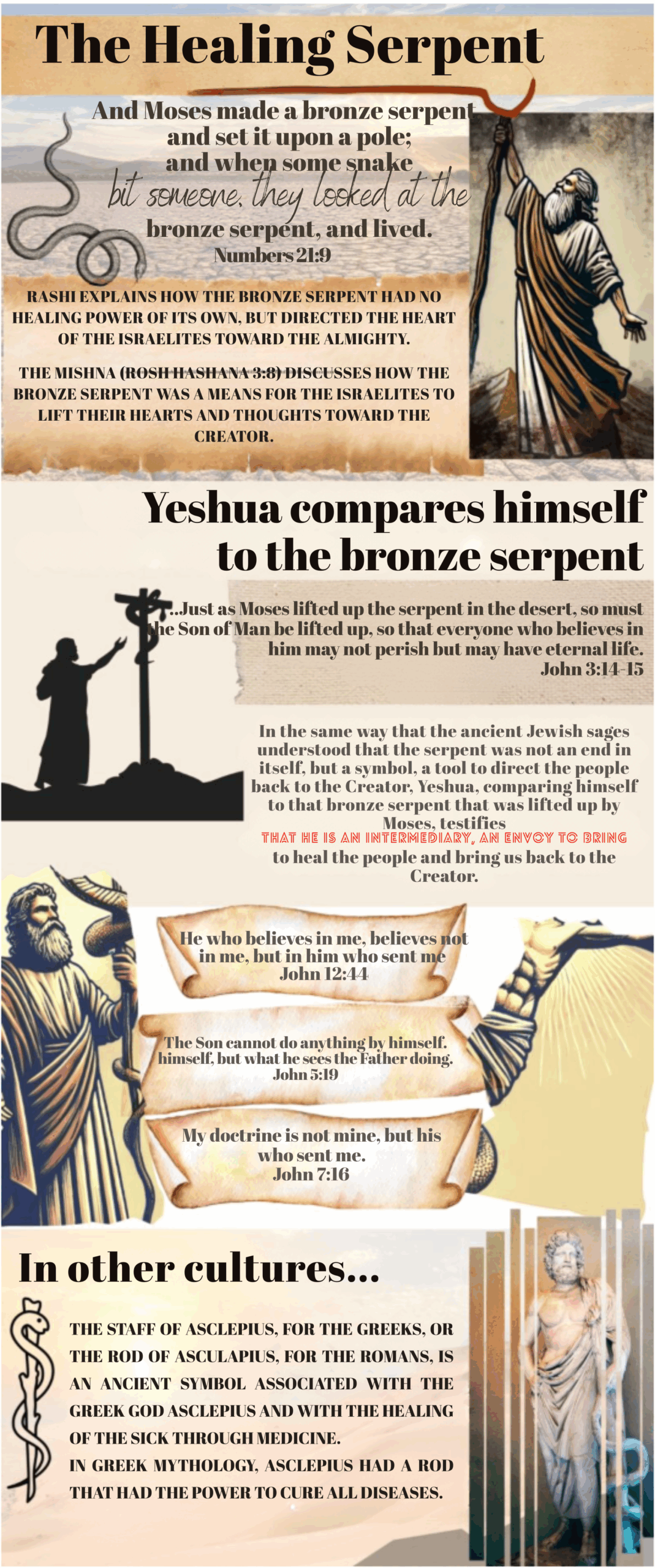Parashah Chukat
Numbers 19:1 – 22:1
Although the serpent has had a bad reputation among believers, given the story of the Garden of Eden, we can see in Scripture that the serpent is not always used in a negative connotation.
Yeshua referred to its cunning to exhort his followers to imitate it. He also recalled the event in the time of Moses, comparing himself to the serpent when it was lifted up and used as a symbol of healing. Even in modern times, this symbol of the serpent raised above the staff is used in the field of health and modern medicine throughout the world.
This event originally took place around 3,400 years ago and is recorded in this section of the Hebrew Scriptures.

This parashah recounts events that took place at the end of Israel’s 40 years in the desert. As they approach the reward of the Promised Land, new challenges arise that will cause the entire people to question their faith in the promises of the Almighty.
The role of faith plays a very important role throughout Scripture. Such as the faith that was counted to Abraham as righteousness, the faith necessary in the promises of the Creator in the desert for 40 years, and the faith that Yeshua exhorted His disciples to have in Him and in the One who sent Him.
Idolatry of the Serpent in the Days of Hezekiah
King Hezekiah, in his effort to purify worship in Israel and eliminate idolatry, destroyed the bronze serpent that Moses had made. Although the serpent had originally been a means of healing and a symbol of faith in God, over time the Israelites began to worship it instead of God Himself, burning incense to it and worshipping it as an idol.
“He removed the high places, broke the images, cut down the Asherah poles, and broke into pieces the bronze snake Moses had made, for until that time the people of Israel had been burning incense to it. He called the place Nehustan.”
2 Kings 18:4
Reflection Questions
1. What lessons of faith and obedience can we learn from the event of the bronze serpent?
2. How can we apply the teaching of looking to God in times of crisis in our daily lives?
3. How can the messianic symbolism of the bronze serpent deepen our understanding of redemption through Yeshua?
4. How can we avoid idolizing religious symbols and figures and instead focus our devotion on the Almighty, as Yeshua taught?